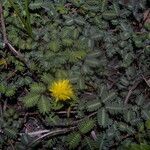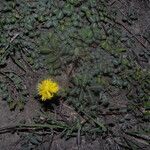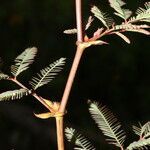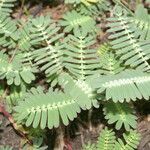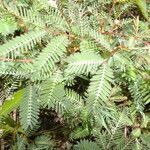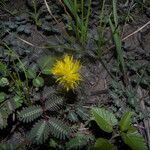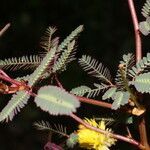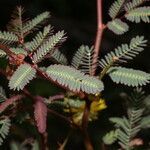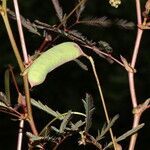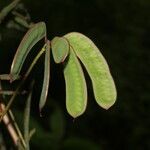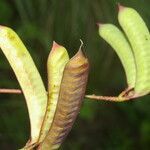Subprostrate or ascending subshrub of swampy habitats, the branchlets gla-brous, not lenticellate. Leaves moderately small, bipinnate, the pinnae 2-4 (mostly 3) pairs opposite on the rachis, the leaflets 10-25 pairs per pinna; petiole 1-2 cm. long, glabrous, somewhat flattened above, bearing a sessile, orbicular gland apically just below insertion of lowermost pair of pinnae; rachis 1-4 cm. long, similar to the petiole, eglandular (except for gland already noted at apex of petiole), termi-nally apiculate; pinnae 1-5 cm. long, the pairs moderately remote from one an-other; leaflets linear or linear-spatulate, 3-10 mm. long and 1-2 mm. wide, rounded or obtuse and usually very briefly mucronate apically, obliquely subtruncate basally, glabrous, all venation obscure; stipules obliquely ovate-lanceolate and subclasping, usually about 5 mm. long. Inflorescence of axillary, pedunculate heads or very short spikes; peduncles up to 10 cm. long in age, glabrous, conspicuously bibract-eate below the middle; heads dense, the floral bractlets obovate-lanceolate, little more than 1 mm. long. Flowers sessile, yellow, the upper ones perfect, the lower ones staminate or infertile and with 10 conspicuous petaloid staminodia 7-8 mm. long; calyx copulate, about 1 mm. long, 5-lobed, glabrous; corolla of 5, free, spatulate petals about 3 mm. long, glabrous; stamens 10?, 4-5 mm. long, glabrous, the anthers almost 1 mm. long; ovary glabrous, dark; style stout, exceeding the stamens; stigma expanded, truncate. Legume oblong, 2-4 cm. long and about 1 cm. wide, apiculate, flat, glabrous, conspicuously stipitate, 2-valved, the seeds several, transverse.
More
Herbs, perennial, terrestrial or subaquatic. Stems erect or ascending, branched. Stipules persistent, lanceolate, ca. 1 cm, base obliquely cordate; pinnae 4-10 pairs, with a suppressed gland between or just below lowest pair of pinnae; leaflets 9-40 pairs per pinna, linear-oblong, 4-18 × 1.5-3 mm, both surfaces glabrous, base rounded, apex obtuse, acute, or mucronate. Heads ovoid, ca. 2 cm. Calyx campanulate, ca. 1.5 mm, 5-dentate. Petals lanceolate, ca. 3 mm, fused at base. Stamens 10; filaments ca. 6 mm, with stipitate gland at apex. Staminodes petal-like, 8-10 mm. Legume oblong, 5-10 × 1.6-2 cm. Seeds 5-20. Fl. Aug-Oct, fr. Oct-Nov.
A herb. It keeps growing from year to year. It can partly grow in water. The stems are erect and branching. The leaves have 4-10 pairs of pinnae with 9-40 leaflets on each. These are 4-18 mm long by 2-3 mm wide. The pods are oblong and 5-10 cm long by 2 cm wide. There are 5-20 seeds.
Herb with usually erect or ascending, branched stems. Leaves with a suppressed gland between or just below the lowest pair of pinnae; leaflets frequently more than 20 pairs per pinna. Seeds 8-20.
